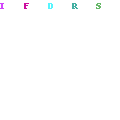 Raphael Gibara is a an Brazilian artist who is mainly known for his typography work, but also is known for calligraphy, this particular piece of typography work was made for his personal use as he made it as a wall piece to decorate his mountain house as he does rock climbing as a hobby, I chose to look at this piece of work as I liked that the letters were hand painted onto wood that was found in a dumpster which I think adds to the hand made quality of the piece, the work has also inspired me to attempt to make a similar piece of work using the same techniques, I was mostly attracted to the bold and colourful lettering on each panel of wood and also the fonts used as they looked similar to something you might have seen at an old funfair, I was suprised to find out that this work had not been done for any type of exhibition or something, but for his own personal use, making the work original as the purpose behind the work was for the artist to put in his mountain house as he enjoys rock climbing.
Raphael Gibara is a an Brazilian artist who is mainly known for his typography work, but also is known for calligraphy, this particular piece of typography work was made for his personal use as he made it as a wall piece to decorate his mountain house as he does rock climbing as a hobby, I chose to look at this piece of work as I liked that the letters were hand painted onto wood that was found in a dumpster which I think adds to the hand made quality of the piece, the work has also inspired me to attempt to make a similar piece of work using the same techniques, I was mostly attracted to the bold and colourful lettering on each panel of wood and also the fonts used as they looked similar to something you might have seen at an old funfair, I was suprised to find out that this work had not been done for any type of exhibition or something, but for his own personal use, making the work original as the purpose behind the work was for the artist to put in his mountain house as he enjoys rock climbing.To create this piece of work Raphael Gibara had first found pieces of wood which he had found in a dumpster outside a construction site which he did not want to go to waste, which he then sanded down and varnished, which he then put enamel on and began to paint the lettering, he has used quite bold colours to make the letters which creates a bubbly/happy atmosphere when looking at the work, as well the shape of the letters themselves which aren't hard bold lines, but more curved bouncy lines and use of serifs on the 'L'
which I feel my be used to represent how the artist feels about climbing as he said it is one of his hobbies and something he enjoys a lot, so by making this piece of typography he can then express to other people his love for climbing by choice of colour, as he bold primary colours such as red, blue and yellow and secondary colours like orange which work with the bold and curved lines making the letters stand out even more, he has also put a black outline behind each letter which contrasts with the bright colours and brings your attention even more to each letter as they the look slightly elevated and as if they're coming of the wood, or 3D, also font is used to represent his love for climbing as the letters are quite curved and create interesting shapes, which has an effect on the way people will interpret and feel about the work.
Using a raw and natural material like wood makes the work relate to the subject its about, as it's to do with rock climbing and something that might be hard to do and also the wood is rough, similar to the rocks.
The structure of the work could have been both random and designed as the pieces of wood were found so the intention to create this piece of work was only made after finding the wood, although Raphael Gibara was able to work with what he had and composed the pieces of wood next to each other so the work was aesthetically pleasing.







